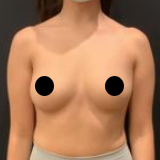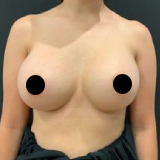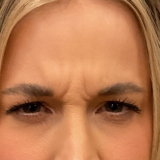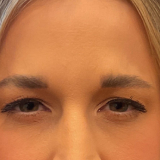Episode 75: Rib Repostioning
Rib Repositioning is a novel technique our doctors perform in Austin and San Antonio. In this week’s episode of Plastic Surgery Untlold, board-certified plastic surgeons Dr. Franco, Dr. Micallef, and Dr. Weinfeld discuss this surgery. Rib Repositioning creates a snatched waist by making a small incision in the bottom two sets of ribs, called the floating ribs, which are not attached to the sternum. Our doctors use amazing tools such as a Piezotome to saw the bone while being safe and precise, as well as the ultrasound. This surgery is perfect for someone who feels square or does not have enough fat to shape their body, transgender patients, and more. Are you looking for a natural hourglass curve? Listen to this podcast!
Transcript:
All right, welcome back to Plastic Surgery Untold, greatest podcast in the world, as voted by us. I got our celebrity cast with us today. So we got Dr. Micallef, Dr. Adam Weinfeld. So maybe we’ll go around, do a little check in. And then today, we’re actually going to talk about rib repositioning, also known as rib x. So this is this is super novel. This is really cool. This is super exciting if you can’t tell, but we’ll leave you in a little suspense while we do a little check in. Dr. Mengele, what’s going on with you? Not a whole lot, you know, I just got board certified by the American Board of Plastic Surgery. So super exciting. Second boards. So now we’re now, exactly, old news double board certified now. So I’m certainly grateful to be done with that process. Otherwise, just really trying to catch up on the last 13 years of studying.
Dr. Weinfeld, What about what about you? I know you were working hard yesterday, but I appreciate you coming back. Yeah, definitely working hard. I guess I’d like to talk very briefly about my my vacation. I went to Amsterdam. Yeah, with my family. And it’s amazing. People keep asking, even though I told them I went with my family. Did you go to the red light district? Did you go to those marijuana coffee shops? And so I just started saying no, I ordered in. *laughing*
Awesome. Let’s jump into it. Because this is a super exciting topic. And I think something people don’t know a lot about. And I think in the past, people have heard of rib removal, which really wasn’t done that commonly because it was a big procedure. You’re actually removing some some rib stuff. You’re you’re doing these things, I think they don’t realize and I know Dr. Weinfeld does a lot of this, for some of his revision rhinos in terms of harvesting a little bit of cartilage and stuff for ribs. We definitely have a lot of familiarity of moving, using some of that material stuff. But it’s really been kind of a cool innovation of this rib repositioning. And so I don’t know if Dr. McCulloh would like to explain a little bit of this. And then we can talk about the kind of what what, how it’s different than past procedures.
Yeah, so it’s, it’s one of the, it really is one of these novel techniques. Essentially, what’s happening is that the bottom two sets of ribs are our floating ribs, essentially, there’s no real attachments to the sternum with these two sets of ribs. And so we’re able to essentially sublux these ribs by making an incision that’s not much bigger than really one of our like liposuction ports, sublux them and really kind of push them in essentially, in order to really define or cinch that waist, and really give more definition to the waist, and both females and we’ve done it in transgender populations as well.
And I think this has been cool, one of things that’s really made this super exciting, and we do it in other procedures. And stay tuned for a future episode where we’ll talk about preservation rhino, not to give ourselves a plug. But you know, there’s this this new, it’s called a Piezetome. And it’s this saw that really has added safety, that has allowed us to do this very precisely and very safely for patients. And maybe Dr. Whiteville can explain that a little bit of this, this super cool device. Yeah, absolutely. Piezetome essentially, is a handheld device that has little saws or other attachments at the end of it. And the way that it works is that an electric current is run through a crystal and when that specific current and that specific crystal are brought together, there’s a vibration, and that vibration is translated to the end of that instrument, to the little bit, the little saw at the end of it. And those super fast vibrations end up allowing it to cut firm structures without injuring soft structures, which is perfect for rib repositioning. Because it protects all that soft tissue. And so I think what’s super cool is people don’t realize we’re not, we’re not removing the bones, your safety structures are still there, you, we can just position it wherever we want in terms of moving the waist in, which is super cool that we have that kind of control and precision.
I think that’s one of the biggest take homes is one, this is really preserving all the soft tissue, it’s really not causing any significant damage to surrounding structures. That’s number one. And number two, I think that people don’t realize that these ribs have no real physiologic consequence. So by by us subluxing these ribs or moving these floating ribs, nothing really physiologically is actually changing in the patient. And so pretty cool technique. For me, you know, someone who loves body contouring as as you too do, it’s opened up a whole realm of body contouring for patients and in the past, we tend to just turn away and these were our patients that have already had a BBL, someone who’s already had a tummy tuck, someone who doesn’t have any fat to shape them, someone who still feels a little square. A lot of our athletic patients, even some of our transgender that are trying to look a little bit more of hourglass figure.
So in the past, there was this whole set of patients where it was frustrating for them, frustrating for us because they had needs that were real, but not a lot that we could offer them and so this has opened up a huge opportunity for people because when you’re trying to create this figure, right, there’s there’s a couple options. One is to, you know lipo people down for people like myself, we have a little love handles, we’ve got some ways some subtraction, subtraction to do. All those love handles are going away recently. They are going away. *laughing*
But the other thing is, is trying to fill the hip dips and lateral buttock. You know, and, and we’ve talked about this previously, but there’s a limit to how much you can stretch that, you know, fat is a great option and we love it. And a lot of these reposition, we’ll get to in a second does in combination with other procedures, but some people just don’t have enough fat, some people don’t don’t have that and we can go down the weeds of off the shelf fillers, but that sometimes can be a little price prohibity for for most of us. But even even in the people that have you know, plenty of reserves of fat, some of these people still just don’t get that contour that they ultimately want, they they really just don’t get that that snatched waist like we would, that all of us really want to give them and I think that this is just one of those techniques that really takes it to the, to another level. I mean, we’re able to really get that waist several inches smaller than we would have ever been able to with just liposuction techniques. Just like everywhere in our body, our waist, our torso, the the shape, the contour, the proportions are dictated, not just by the soft tissues, but the bone and skeleton that supports those soft tissues, right?
Yeah. And what’s really cool is that this can be done as a standalone, as a combination procedure, you can really do it with all sorts of things. I’ve most commonly done this with BBLs, with tummy tucks, which makes sense, right? Because these are the procedures we’re trying to come in. But we’ve also had a few patients who have either had these procedures or just aren’t candidates for those procedures and just done it as an isolated procedure. And and this is where I think the consultation is so important to see what’s going to get them the result they want. Right? Yeah.
What can patients expect the day of surgery and in terms of the recovery? Ooh, that’s a that’s a great one. You know, I think some of the biggest questions I get is this, is this going to be a difficult recovery? In all of our patients that we’ve done it in combination with BBL, tummy tuck, it’s probably been the, one of the least concerns of their pain and discomfort. Anyone who’s who’s played sports or done something, you know, if you, you make your ribs sore, you’re going to be sore for a while. But but people still can be up moving because as Dr. Micallef had mentioned, the incisions are so tiny like a liposuction, there’s not, it’s not like a tummy tuck or breast lift where you’re going to split a an incision open per se. And because of how Dr. Weinfeld, you know, talked about, that you’re actually damaging very little of soft tissue.
And I think most people don’t realize how many nutrients and, and wound healing properties all that soft tissue has. Because we basically open just a little bit of that soft tissue to get to the rib, make our little precise incision, and then that soft tissue basically covers back up over then, you basically kind of splintered and casted that that rib back up. Yeah. Which is super cool. So I would say most of you, if you did a rib alone, most people can be back to work within a week. Most people who do it with the BBL, it has not extended their recovery at all. If you had a tummy tuck, that tummy tuck’s gonna dictate how long. And it sounds like the discomfort just blends into the general discomfort that patients experience with, with any sort of surgery that they’re combining with.
No, no question. No question. I think there are some other limitations of doing this procedure. You know, if people are over the age of 45, you know, we do take that into consideration, like everything else, you know, our bones get a little bit more osteopenic, you know, depends on kind of overall health stuff. But but definitely age is one of the things because we want those bones and stuff to heal really, really well. So I think that’s something into consideration. I think like most things, low BMIs, people are very thin, I think this works really well. Sometimes I think if if we have some other kind of weight issues, BMI issues, sometimes we’ll need to address that first, because we just want to do a procedure where you’re gonna see a change. Yeah, meaning if someone has a larger soft tissue envelope, skin fat, that are kind of covering up, camouflaging the changes that you might see, they’re not going to be as wild as if they’re a little bit lower in weight, is that what I’m hearing?
100%. The weight, also the skin, you know, we talk a lot about our liposuction. And why we end up doing tummy tucks is, you know, that’s basically the canvas that covers the underneath of the structure. So if you have, you know, some of the extra adipose tissue or you have a lot of skin laxity, it’s not going to re-drape and show off your new form on the inside. So that’s why a lot of times this will be either staged or are done in combination with some of those procedures. I think the biggest key to this procedure is the consultation and really kind of helping define what the expectations of the patient are. Because certainly, there’s a correct patient population for us to do this on who will actually see a benefit. And then there’s obviously individuals that potentially are not the best candidates, whether it’s because they’re slightly older in age or potentially osteopenic or their BMI’s on the higher end. And, and it’s something that again, not to give ourselves a shameless plug, but we’re gonna talk about little in the future because I think our our perception of, or or racey, not perception, but our treatment method has changed a little bit with some of the advent of some of the new medications that we’ll get to later today about because I think there’s such a benefit and so many new things out there that can help people get to a good spot. I think we all believe the better shape you go into surgery, the better you’re going to come out.
Yeah, correct. Now from a healing, from recovery stuff, I think the other thing that that’s interesting about the the rib procedure, I’d love to get your guys’s ideas, there’s a lot of patients who want this more athletic figure, they want more curves, but they’re so afraid of looking overly fake in terms of a big butt, they don’t want to have these huge, wide hips. And this is a huge window of opportunity for them. Yeah, that that that thin woman who will one, doesn’t have fat to move around. But like you said, just wants a little bit more of a feminine hourglass curve, that OG curve you get from the waist to the to the buttocks and hips that some women just aren’t born with it. And just to tweak their waist a little bit, just push those ribs in just a little bit really can can be very powerful for them. Yeah, can really help feminize their silhouette.
And then I know Dr. Wytheville you, you and I had talked previously about, in our transgender population, you know, most commonly we treat the 11th and 12th. But you know, in some of our transgender patients that are looking for a little bit more of that hourglass figure, you can actually go up to the 10th rib and move that in a little bit and really try and help with some of that figure. Yeah. So essentially, what we’re doing is we are then repositionining the ribs just to mimic the position, the silhouette that that cis women have. That the female has. Yeah. Which is super interesting, again, because it’s, it’s such a novel procedure that is so much less morbid than some of the stuff in the past. But there’s so many people out there who wanted to make these little changes, and we just didn’t have something to offer them.
Maybe we could talk a little bit about the actual surgery itself, if you guys don’t mind for just a little bit, because I think most of the time when we bring ribs up and stuff like that, I think most people have the perception that this is a four or five hour surgery. You’ve already cleared up that, you know, they’re not going to have a six, seven inch incision, you know, because that was some of the old problems with rib removal. And we’re not doing any of that. I think we all can pretty safely say that, you know, a procedure like this, it takes us about an hour, hour and a half, there’s the positioning and getting you kind of into the right spot. But but overall is is a very quick procedure.
Yeah, I mean, honestly, the procedure is extremely quick. It really just takes essentially, a 1.5 or 2 centimeter incision, really, which is no, not much bigger, not much larger, I’m sorry, than our liposuction. Less than an inch, just less than an inch. Yeah. So and it’s really just placed right over the ribs that we are planning to sublux, make two little incisions, use the Piezetome that Dr. Weinfeld so eloquently discussed here short, just a short time ago. And then you reposition those ribs, and then we close the hole. Yeah, and I’ve had some people say, well, well, how can you see, make sure you’re in the exact right spot. You know, with such a small setup, we use the ultrasound. So we already have the ultrasound, so we can verify which ribs, we can measure exactly where we’re at, we can see exactly, you know, over the top of this, we even have a few little tricks not to give away all of our nuggets of how we set these incisions a little off so that even if somebody sees it, it doesn’t look so artificial. So, so many kinds of cool little things to tweak this. And just amazing how a little bit of technology has changed so much for this.
You know, it’s really interesting when you think about how technology has changed things like this. If you go back to societies where we’ve, they’ve always been this interest in a narrower waist in, in women, right, right, it’s considered more feminine. Yeah. And it really goes back to that 0.7, waist to hip ratio. And in the olden days, when they didn’t have Piezetomes, and they weren’t even doing surgery, what were they doing? They were binding their ways, they were placing corsets, they were doing sort of like a snail mail version of what we have now, email, you know, we can use the Piezetome and almost instantaneously change the position of the ribs. Whereas in the past, people were wearing binders and corsets from their teenage years just to shape those ribs. And, and that’s some of the recovery with the rib repositioning. Because when we. I was trying to set that up. I figured you were trying to get us to the end here *laughing* …trying to get us to talk about rhinoplasty.
I love this conversation, but you know, moving moving that into what we do is is repositioning and then almost like any type of splint will actually put people in a corset. And then that actually can help us bring in the waist up a little bit more, we can tailor to what people want. And then that splinting also actually makes it much more comfortable for people as well. Just like anybody has a sprained ankle, the kind of more support you give those first couple of weeks, the better you’re going to do. And it’s like when you break a rib. If you’ve ever broken a rib, it’s, the support helps a ton.
You know, I hope people can feel like our passion, our excitement stuff. I know we do a lot of procedures. But I think all of us feel pretty passionate about body contouring and how we can do this. And I think, I mean, not to diverge a little bit. But don’t you guys feel like even, you feel like something so simple as body contouring with lipo tummy tucks, the advancements that have happened over the last two or three years are absolutely insane with the ultrasound, with some of the curve cannulas, with some of the different technologies…. And how some of these different little technologies have come together because the Piezetome, with the ultrasound, we can do some of these rib stuff that was, would have been super challenging five or six years ago.
I think it’s, I think body contouring has become as precise as nuanced as we used to think like facial surgery, and rhinoplasty was, you know, someone who, I do both, of course, we know that. But as someone who’s leaned a little bit more towards the face and the nose, I used to think well, the thing that drew me to it was that precision, that nuance, that customization that we can provide. And as I’ve worked more with you, and as I’ve gotten really almost equally involved with body, you know, I well, that’s not really true. But as I’ve gotten more… bodies, I guess my interest is equal. I’ve really started to recognize that with all these new tools that you’re referring to that that it really has become as as precise as exciting as much as a chess game as I used to consider the face. Yeah. Because like when you do your your rhinoplasty like planning, do you have these pictures? You have all these notes, but now the body contouring has become exactly like that. So many tools. Because it’s like, okay, I want to, you know, this is their goal. This is their wish picture. Okay, cool.
Let’s let’s talk about how we get there. What combination of procedures am I going to do? What combination of technology am I gonna utilize to get there? 100%. Yeah, completely.
Lipo sculpting? You know, do I want to do some ab etching? Do I want to do some ab filling? Do I want a little Ovily before our BBL to break up some cellulite? Do we need you know, Renuvion body tight? Do we need to do some skin tightening. And it’s funny how all those things come together in and now rib x is just a another step in that to help treat people, to get people to an absolutely fabulous spot. And I think it’s important for people to know, one, you know, bring in the goals, talk to us.
Because one, if we just can’t do it, we’re gonna be like, hey, you know that that’s just not in our cards, I want to be in the NBA. I’m 5’8, I can’t jump, I can’t run. But other than that. I don’t really have a jump shot either. But I was so close. But you know, I think there’s so many things that we can help get to that goal stuff and just really work people through. So super, super exciting. We did have a couple patients… since Travis is out on vacation, you know, 12 vacations a year, even though it’s only you know, mid January here. You know, some people have asked me whether you could do this under local anesthesia. I mean, you technically could, I think it would be a little bit more challenging. Typically we do this under general anesthesia, typically we do this with a lot of other procedures. But but there is a variety of options for people. Yeah, stay tuned.
Yeah, maybe with, that was the interesting question. Maybe with with intercostal blocks, things like that, it would actually be feasible, because an ultrasound would help with that.
Yeah, I think the and probably a topic for another day is all the things we use the ultrasound for. But I think you know, the visualization has helped that. And we’ll get to it on our next episode of of… but how we actually use the ultrasound to mark out your true anatomy when we’re doing some of this. So it’s cool because we’re using the ultrasound 360 up and down to really help with that, that precise body contouring def. Any last little nuggets that you guys would like to leave people with about rib repositioning, rib x stuff that you guys would like to to make sure people know. Just so you guys know, we are doing rib x rib repositioning in San Antonio, Texas, as well as Austin, Texas.
Yeah, you know, we have no control or not a lot of control over what our bones are like, right? And our genetics, for the most part are the determinant of this. And no longer do we have to be beholden to the double helix, you know, our genes don’t have to determine who we are, what we look like. And we have a lot more power over that than we did in the past. And I was thinking about this, as you were mentioning, patients who are seeking this for gender affirmation, you know, they’re they’re, these patients who identify as a gender that their genetics didn’t push them towards, physically. They’re able to execute power over that, narrow their waist.Yeah. And I think it’s powerful right now, right?
That’s super powerful, because I mean, if you think about for the inches that we can move people’s waist and how much fat would we have to lipo or take out, you know, and, we talked about briefly, but how much fat would you have to add to the hips and sometimes that just gives people a wider or non-athletic look that they’re not seeking? Exactly. There’s
some people that just don’t want that wider hip or that, that wider thigh. Because a lot of our patients want, in content we’ve talked about in the past, the the body balancing, everything to be flow and and so they don’t want like, you know a waist that doesn’t go with their butt, that doesn’t go with their thighs.
And so you know, this is a chance to kind of take all those things and, and look, maybe rib rib repositioning isn’t the procedure for you, but maybe it is. And so we’ll we’ll walk you through that, I think it’s super important for people to realize this is much much different than the rib removal that was done so radically of the past. You know, when people would do that, they would do these large incisions on the back, they would go through a tummy tuck incision and go all the way up. And the procedures took, you know, four or five hours procedure, very morbid, higher risk for higher risk for complications. And with the minimal incisions, the minimal dissection, I mean, the risk for some of those chronic pain, nerve, other things is so low, because you’re not physically taking that stuff out. And we’re directly visualizing everything we’re doing utilizing the ultrasound.
And the Piezetome. I mean, this has been a huge, the technology is crazy, because it’s been around for a long time, we actually used it for other things and it is now involved with this. But the concept that this saw is actually made that it cuts hard structures, but now soft structures. It’s almost like if you guys are watching this, like. It’s like mind blowing. So cool. Plastic surgery at its best. And we’ll get into it in preservation rhino because it’s become so popular there because it’s not destructive to things which is, is crazy. And this is what has just evolved. And I think why we get so excited is that we’ve been doing this for a while. And it’s almost like, like, this new world is opened up with some of the technology that’s come around over the last three or four years, which only has made procedures safer and made the recovery easier for patients, which is why we’re excited. We don’t want people to be in pain. We don’t want people to have a long recovery. We know people gotta get back in alive, so It’s easier for patients and easier for us. Yeah.
Oh 100%. Yeah. Well, I think that that was kind of a nice summary of rib repositioning, rib x stuff and so we’ll definitely do some more lunch and learns and help people with that. But super excited. Stay tuned. We’re going to talk a little bit more about some more topics. So we’ll talk to you guys soon. Plastic Surgery Untold, greatest podcast in the world, as voted by us. We’ll see you guys soon. Bye.





